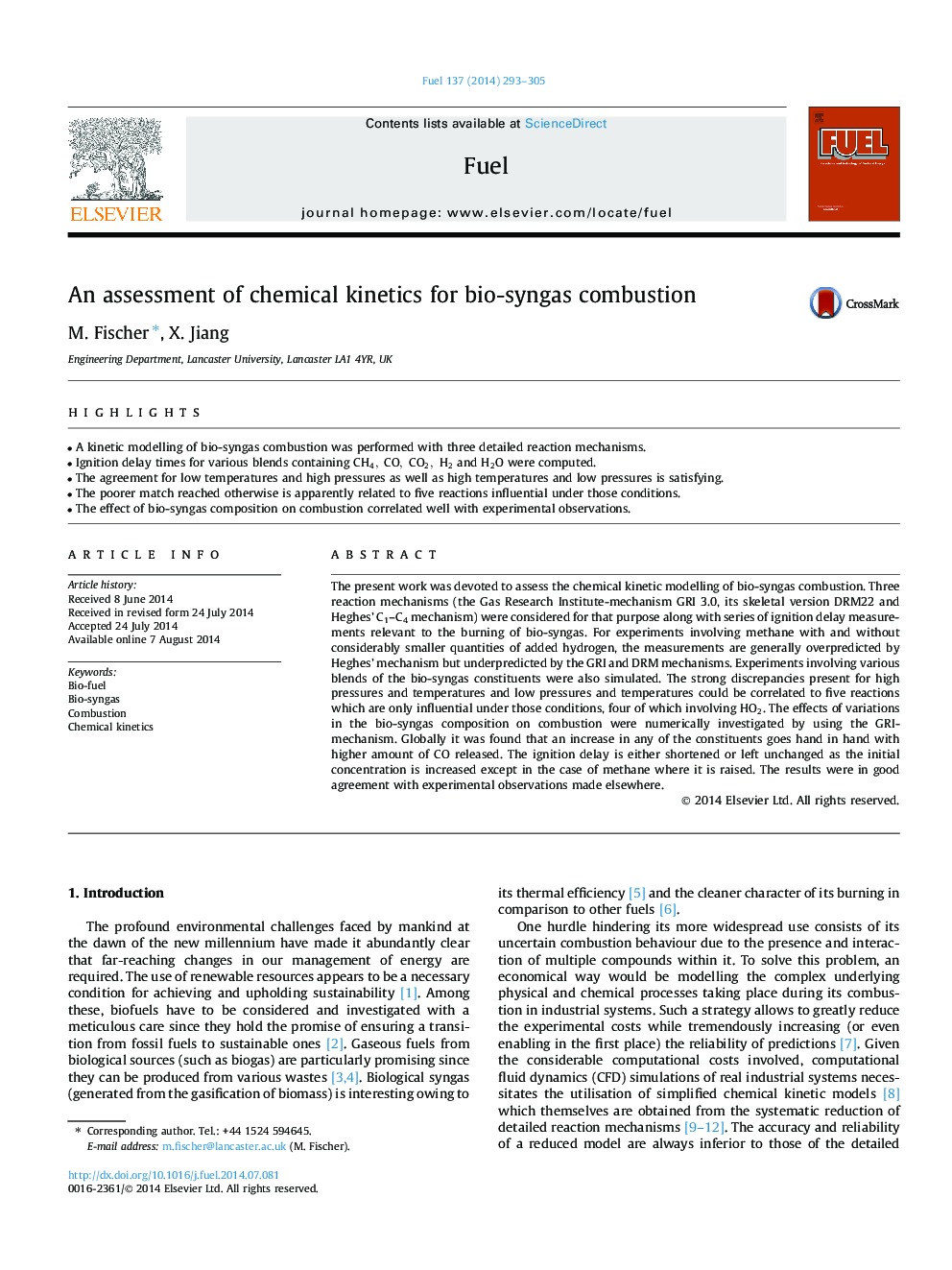| Article ID | Journal | Published Year | Pages | File Type |
|---|---|---|---|---|
| 206049 | Fuel | 2014 | 13 Pages |
•A kinetic modelling of bio-syngas combustion was performed with three detailed reaction mechanisms.•Ignition delay times for various blends containing CH4,CO,CO2,H2 and H2OH2O were computed.•The agreement for low temperatures and high pressures as well as high temperatures and low pressures is satisfying.•The poorer match reached otherwise is apparently related to five reactions influential under those conditions.•The effect of bio-syngas composition on combustion correlated well with experimental observations.
The present work was devoted to assess the chemical kinetic modelling of bio-syngas combustion. Three reaction mechanisms (the Gas Research Institute-mechanism GRI 3.0, its skeletal version DRM22 and Heghes’ C1–C4 mechanism) were considered for that purpose along with series of ignition delay measurements relevant to the burning of bio-syngas. For experiments involving methane with and without considerably smaller quantities of added hydrogen, the measurements are generally overpredicted by Heghes’ mechanism but underpredicted by the GRI and DRM mechanisms. Experiments involving various blends of the bio-syngas constituents were also simulated. The strong discrepancies present for high pressures and temperatures and low pressures and temperatures could be correlated to five reactions which are only influential under those conditions, four of which involving HO2HO2. The effects of variations in the bio-syngas composition on combustion were numerically investigated by using the GRI-mechanism. Globally it was found that an increase in any of the constituents goes hand in hand with higher amount of CO released. The ignition delay is either shortened or left unchanged as the initial concentration is increased except in the case of methane where it is raised. The results were in good agreement with experimental observations made elsewhere.
